Durian trees often have many serious diseases that cause heavy losses in productivity and economy. Some typical diseases include root rot, fruit rot, pink fungus, latex leak.... Join Sataka to learn about 10 Diseases of durian trees below.
Durian trees, with their distinctively delicious flavor, have become one of the most popular fruits in many countries, including Vietnam. However, producing high-quality durian fruits requires farmers to overcome numerous challenges, with durian diseases being a significant obstacle. These diseases not only affect yield but also cause substantial economic losses. Join Sataka as we explore the causes, symptoms, and prevention measures for durian diseases in this article.
Root rot and yellow leaf disease are typically caused by the Phytophthora fungus. The most visible symptom is the leaves turning yellow from green before gradually falling off. The roots decay, losing their ability to absorb water and nutrients, leading to weakened trees, stunted growth, and potentially death if not treated promptly.
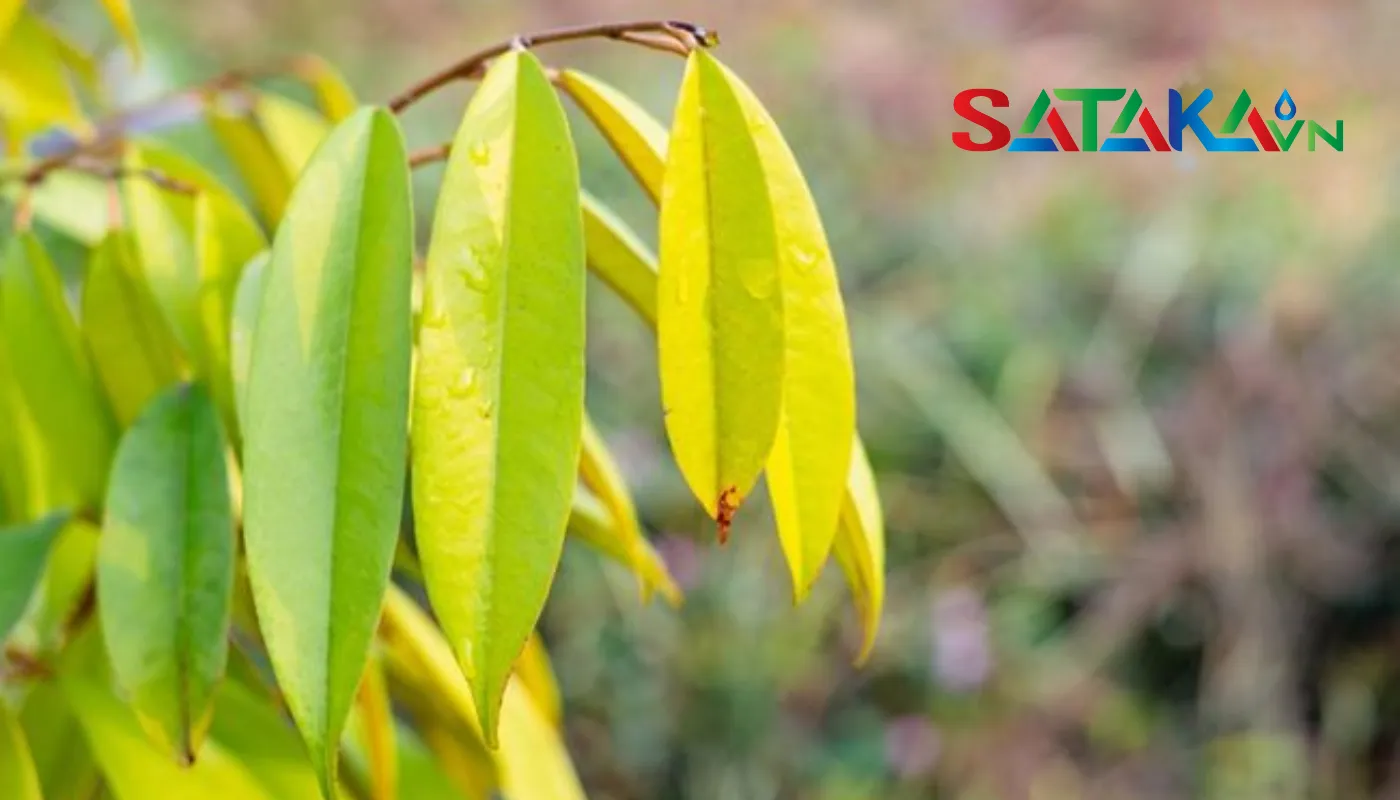
Signs of yellowing disease are easily seen on the leaves
Fruit rot disease is another major durian disease, causing tree death and significant economic losses. It is primarily caused by the Phytophthora palmivora fungus. Symptoms are visible as the fruit begins rotting from the stem, spreading downward. Infected fruits develop dark brown rot patches, emit a foul smell, and are prone to falling. This not only reduces yield but also severely impacts product quality.
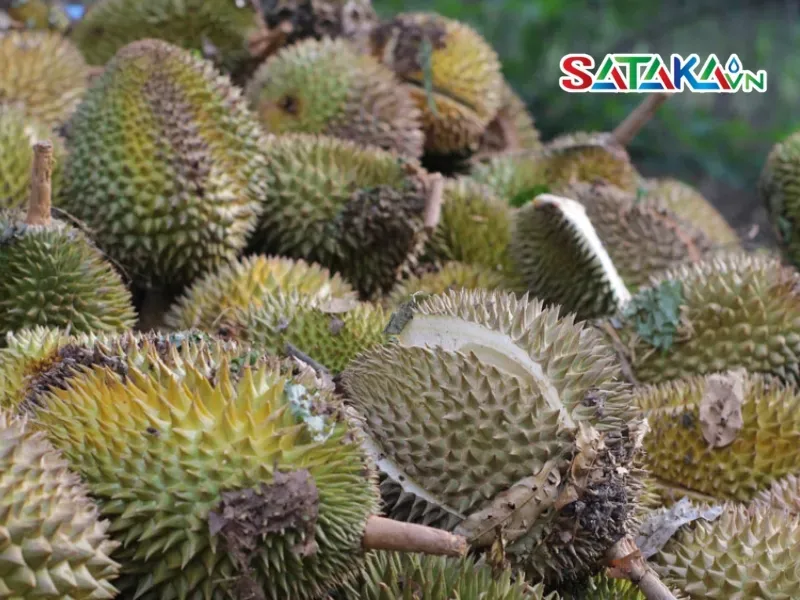
Fruit rot disease in durian trees
Leaf blight disease is a common durian ailment that significantly affects tree productivity. It is often caused by fungi such as Phytophthora and Pseudotheraptus. Symptoms include brown or black burn-like spots starting at the leaf edges and spreading inward. In severe cases, the leaves dry out and fall, impairing the tree’s photosynthesis and vitality.
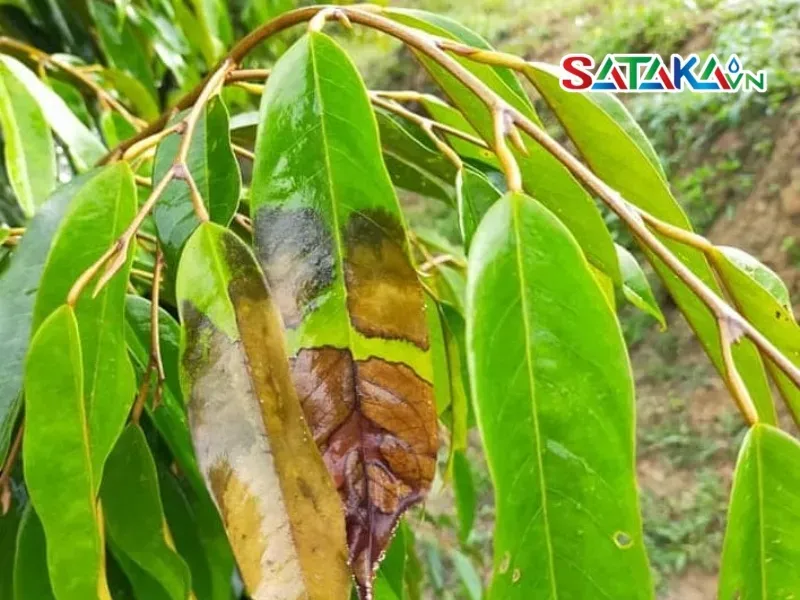
Durian leaf blight is easy to see through the leaves
Stem canker disease is commonly caused by the Phytophthora palmivora fungus. The disease is characterized by cracks in the tree's bark, which exude a yellow or brown resin-like substance. Severe infections can cause the cracks to widen and deepen, weakening the tree and reducing its growth and lifespan.
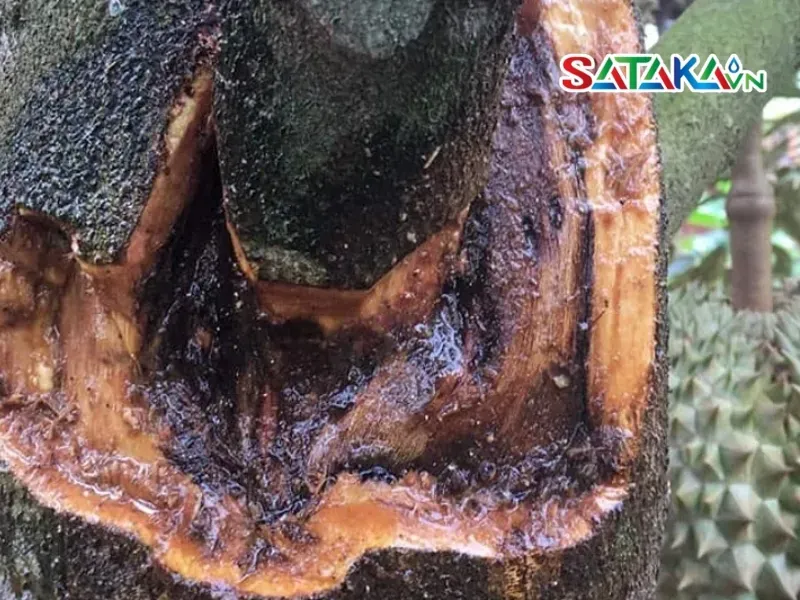
Stem cracking disease in durian trees
Wet and poorly ventilated conditions are ideal for the development of Phytophthora. Improper care practices, such as excessive or imbalanced fertilization, can also increase the risk of disease. Experts recommend improving drainage, maintaining appropriate soil moisture, and using suitable plant protection chemicals to manage this disease.
Leaf blight and tip dieback disease are common issues for durian trees, often caused by Phomopsis durionis or Fusarium oxysporum. Symptoms include leaf blight that starts at the tips, turning brown or black before drying out. The tree tips die, reducing growth and development. Without timely treatment, the disease can spread and severely damage the entire tree.

Leaf spot disease is usually caused by the fungus Colletotrichum gloeosporioides. Symptoms appear as small brown or black irregularly shaped spots on leaves. As the disease progresses, these spots can expand and merge, causing the leaves to dry and fall. This disease reduces photosynthetic capacity, weakens the tree, and decreases both yield and fruit quality.
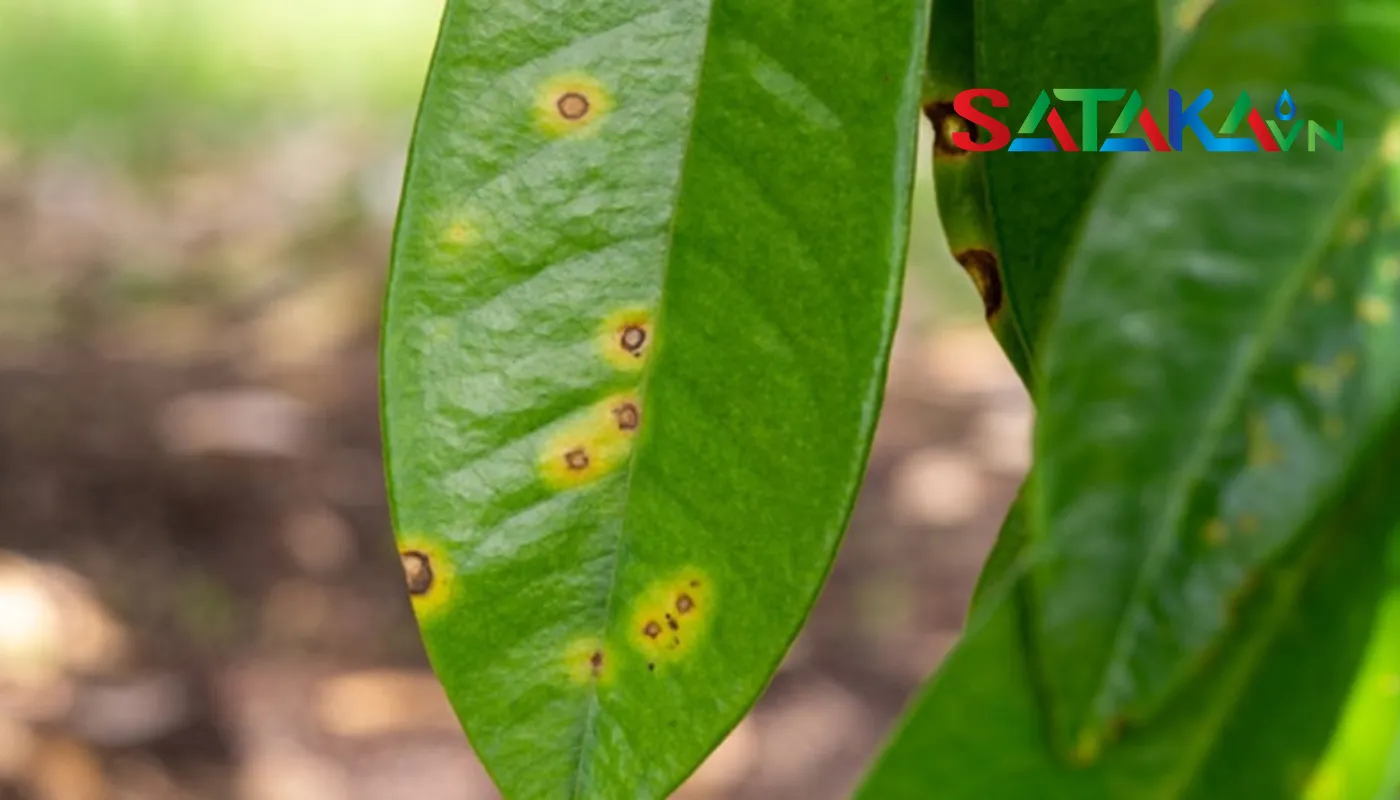
Common durian disease - Durian leaf spot disease
Durian trees also face fruit-related diseases, including fruit fungal disease caused by Phytophthora palmivora. This disease occurs under humid and high-temperature conditions favorable for fungal growth. Symptoms include brown or black rot spots on the fruit, emitting a foul odor and becoming soft and mushy. These spots spread rapidly, spoiling the fruit and reducing its market value.
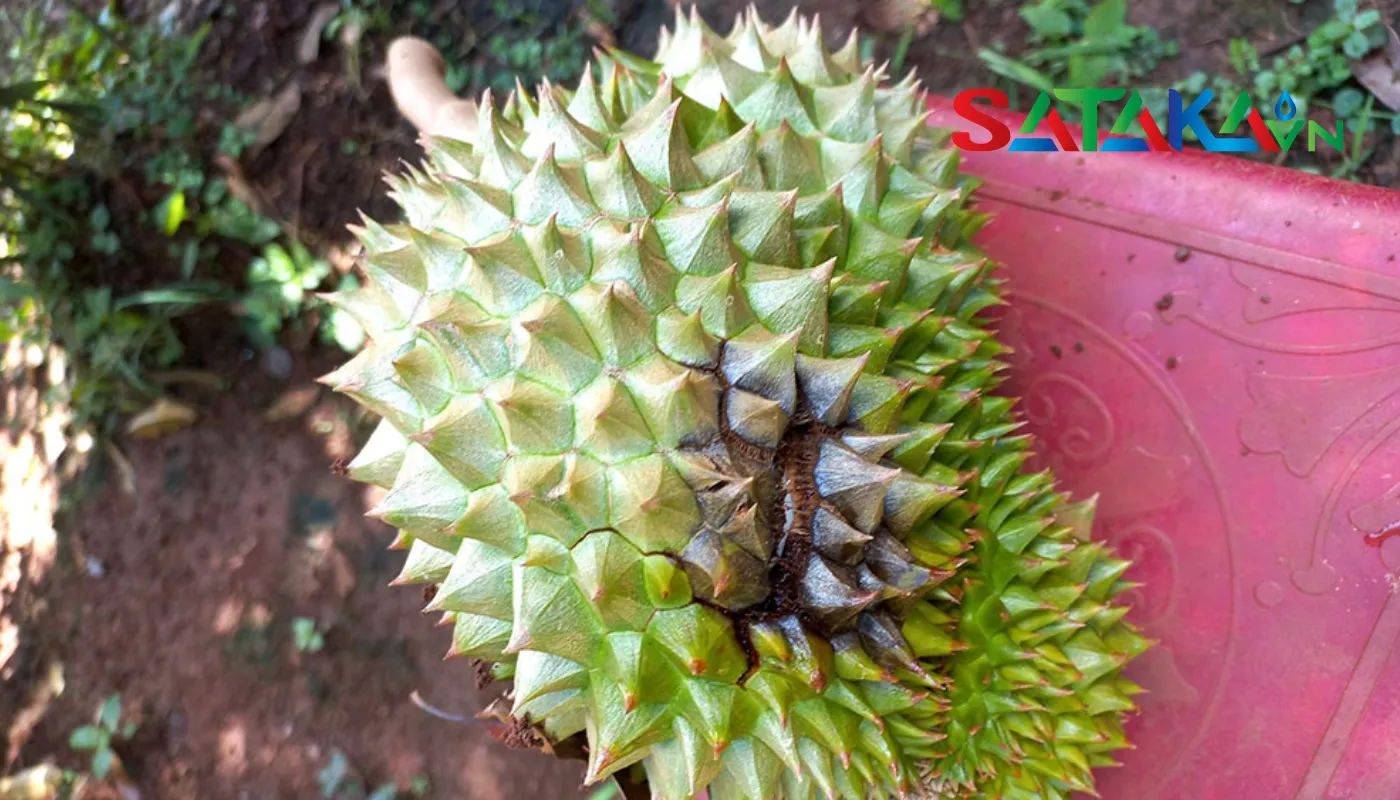
Anthracnose is a common and harmful disease affecting durian trees, caused by the fungus Colletotrichum gloeosporioides. It affects leaves, flowers, and fruits. Symptoms include dark brown burn-like patches on leaves, flowers, and fruits. These patches can expand and merge, causing leaves to dry, flowers to fall, and fruits to rot, reducing both yield and quality.
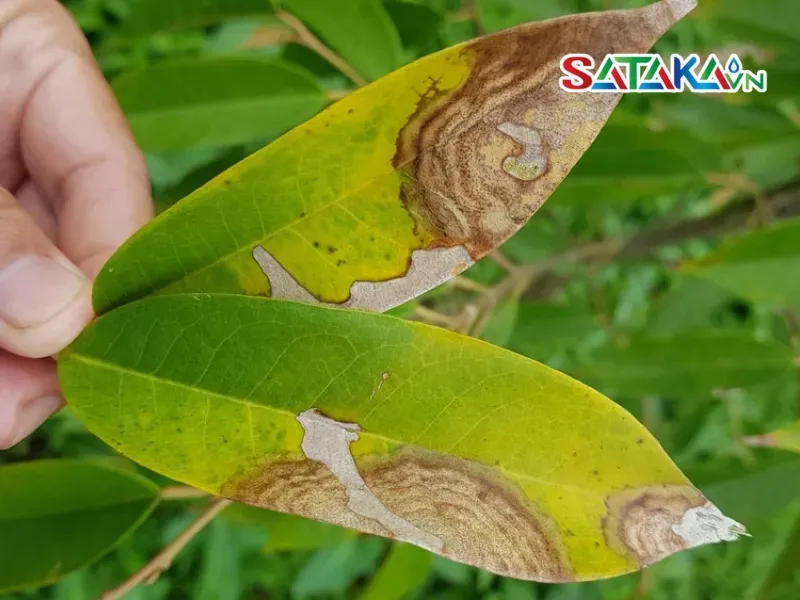
Anthracnose disease in durian trees
Algal spot disease, caused by Cephaleuros virescens, appears as irregularly shaped green or reddish-brown spots on leaves. As the disease progresses, these spots can spread and merge, causing leaves to dry and fall. While not immediately severe, it can impact the tree's long-term health and productivity.
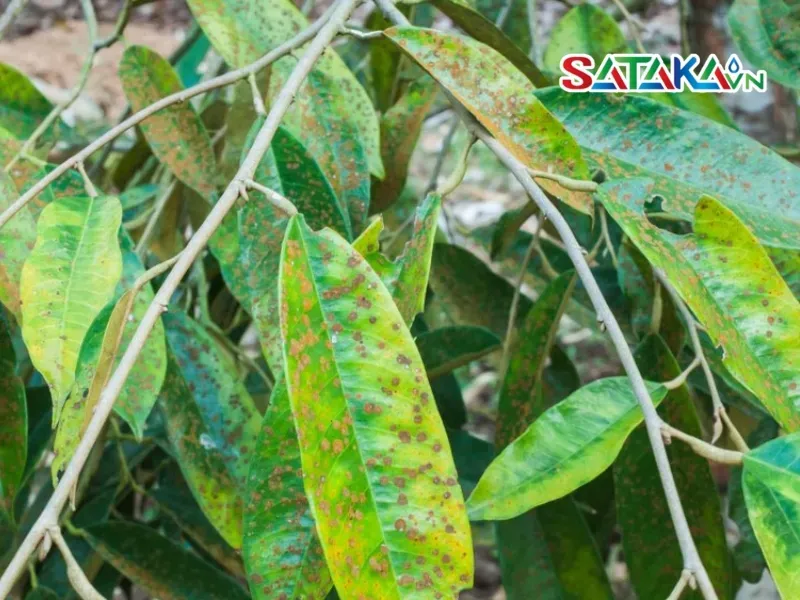
Seaweed spot disease - Durian tree disease
Pink mold disease, caused by the fungus Corticium salmonicolor, primarily affects tree trunks and branches. Fungal spores develop into pink or reddish patches on the bark. As the disease progresses, these patches expand, causing the bark to crack and peel, disrupting the tree’s ability to transport water and nutrients. If untreated, this disease can spread widely and kill the tree.
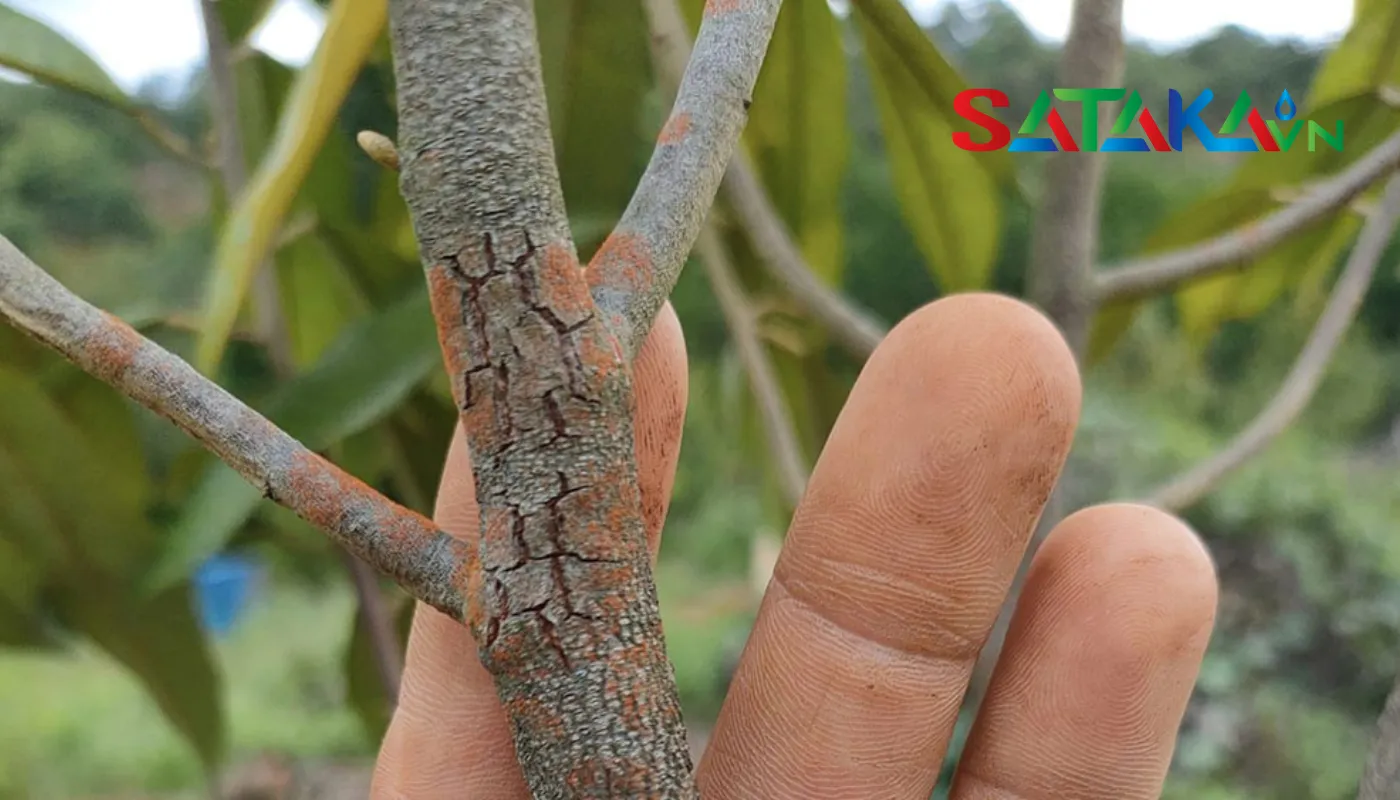
Effective disease prevention is crucial to maintaining healthy durian trees and maximizing yields. Sataka recommends the following measures:
Select durian varieties with good resistance to common diseases such as fungal infections, bacteria, and pests. Healthy saplings reduce the risk of disease and ensure higher yields.
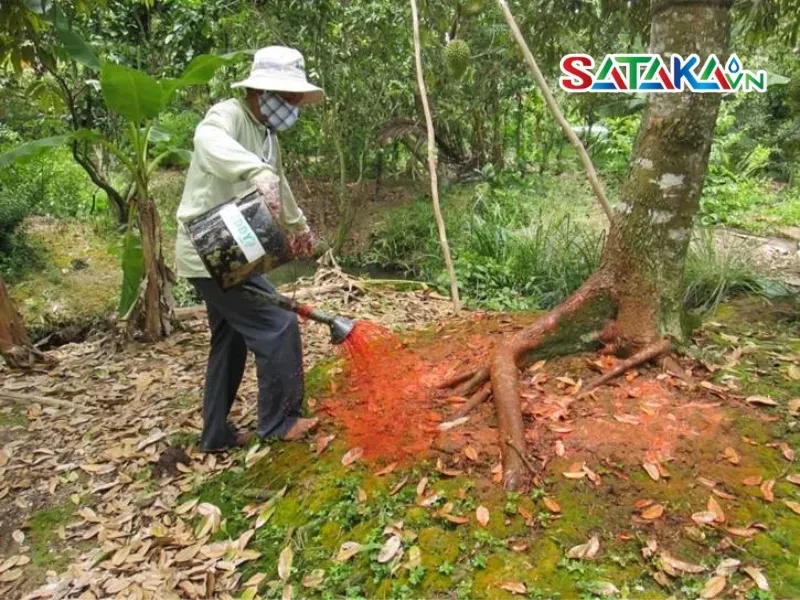
Measures to prevent durian disease
Preventing and managing durian diseases effectively is a vital aspect of cultivation and care. By adopting scientific farming practices and using suitable plant protection products, farmers can minimize disease impact and ensure the healthy development of durian trees. Sataka Vietnam is committed to supporting farmers with effective solutions to safeguard durian trees, improve yields, and enhance product quality. Contact us today for free consultations and expert advice!